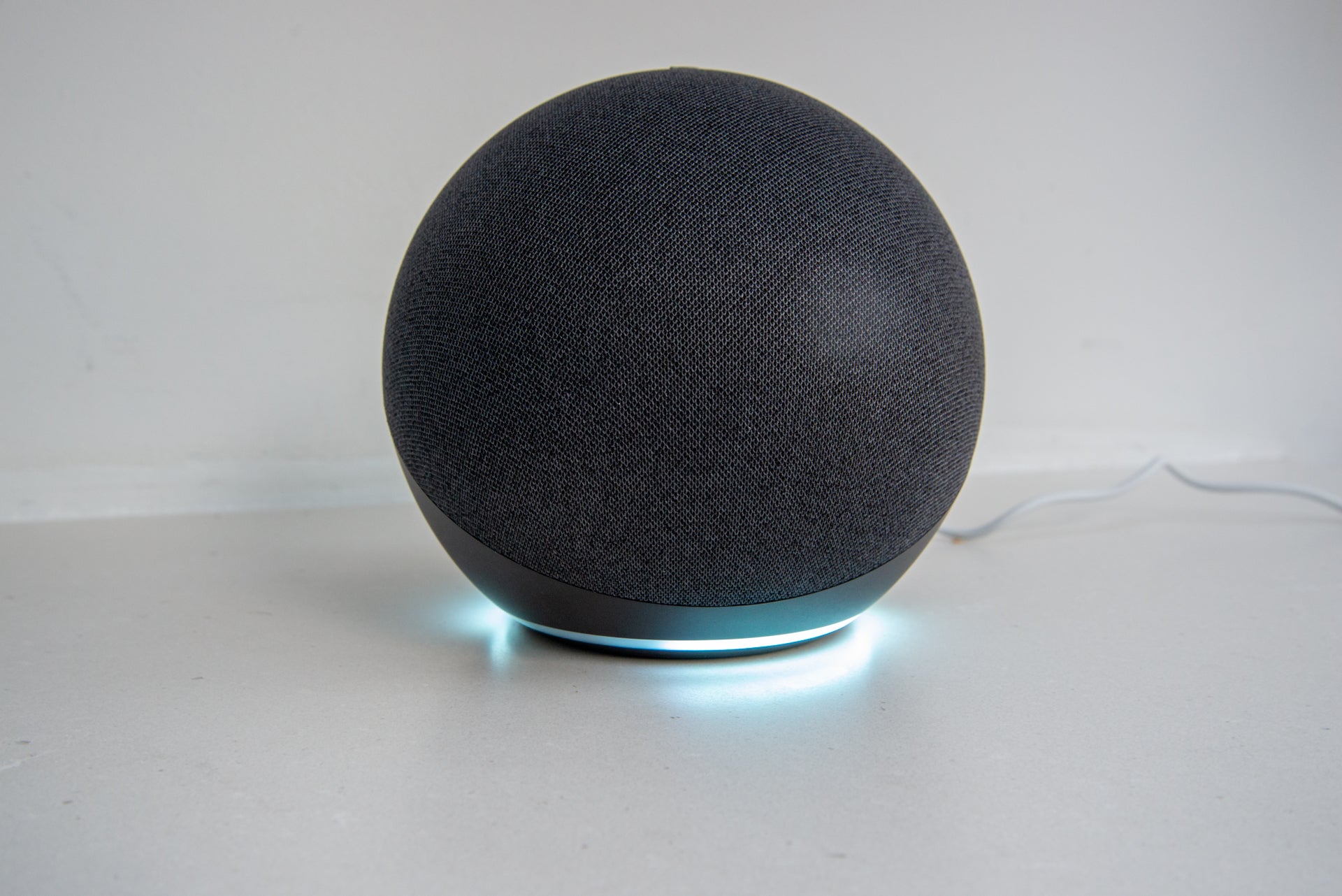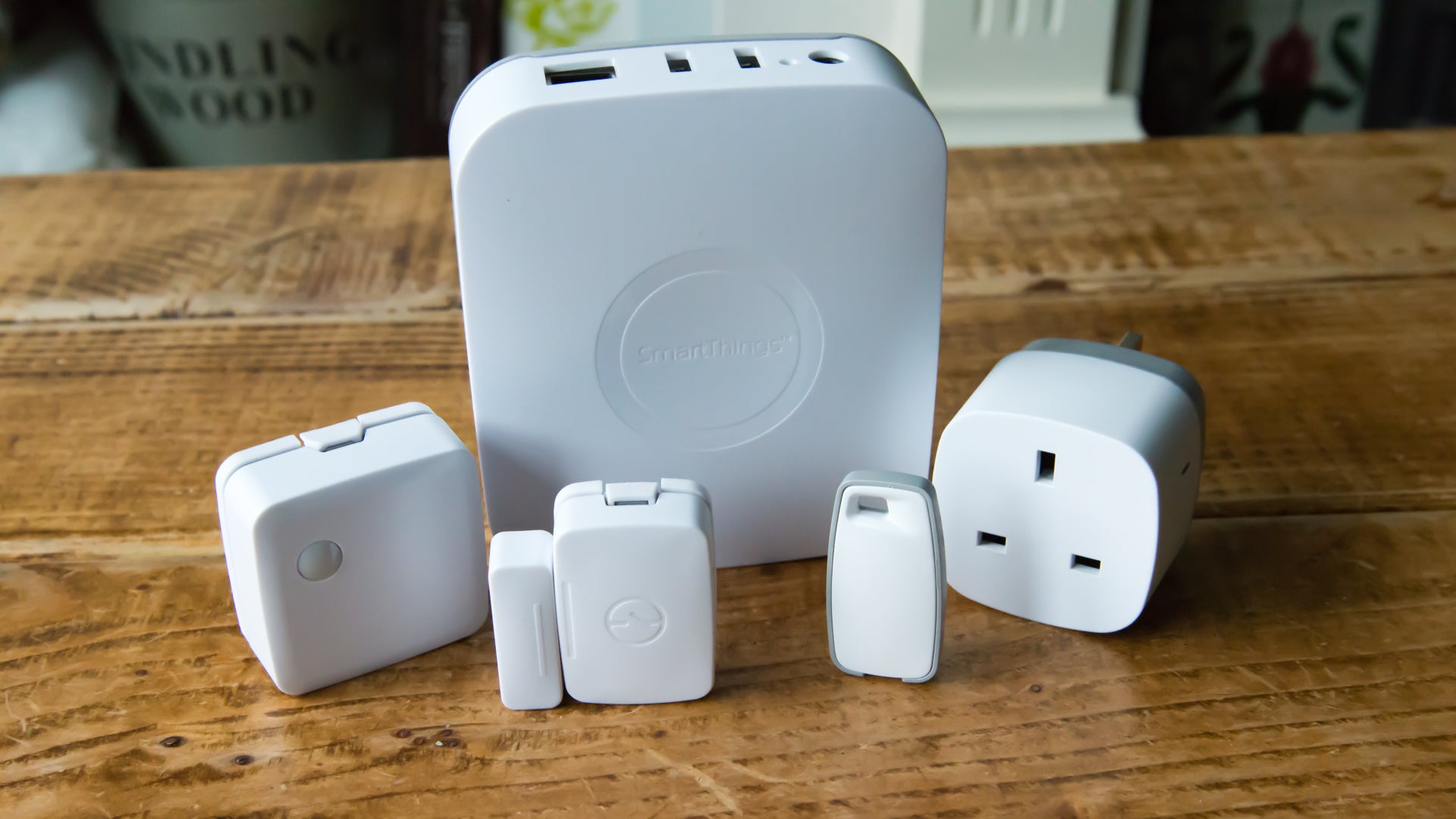Homey Bridge Review
A smart home bridge for enthusiats.
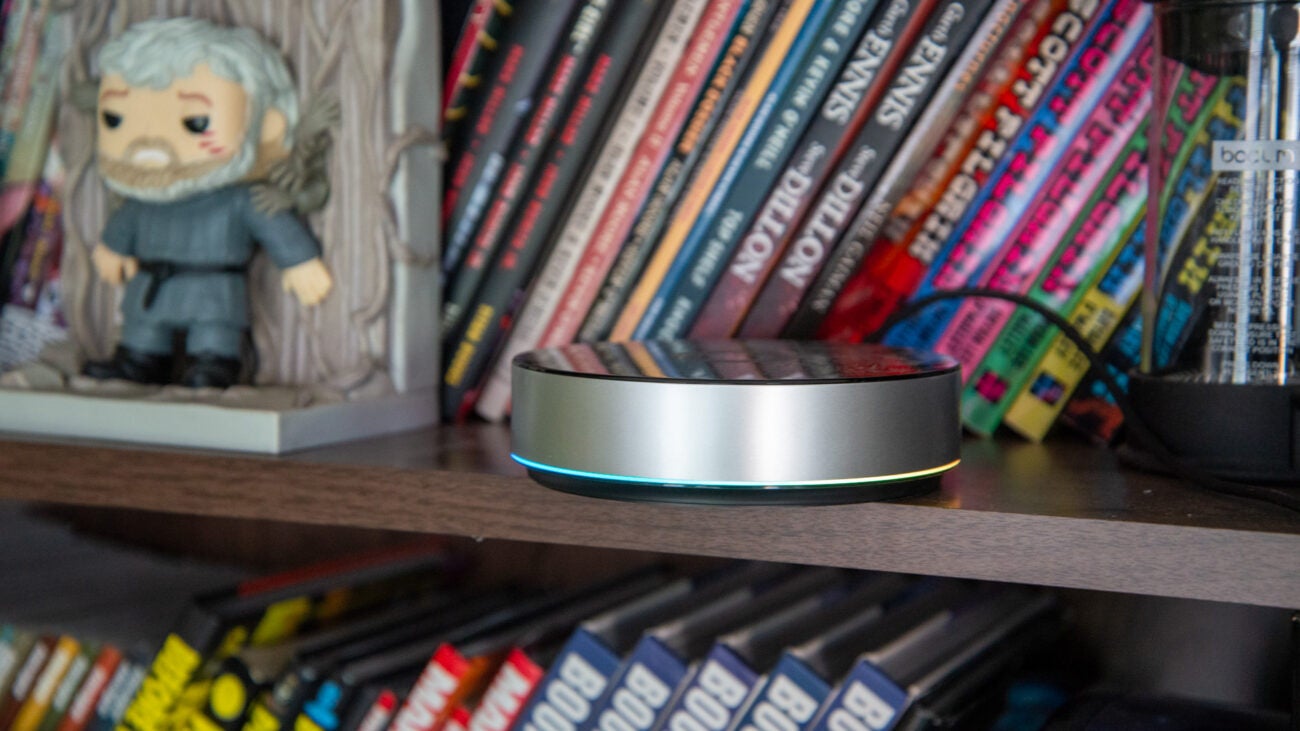
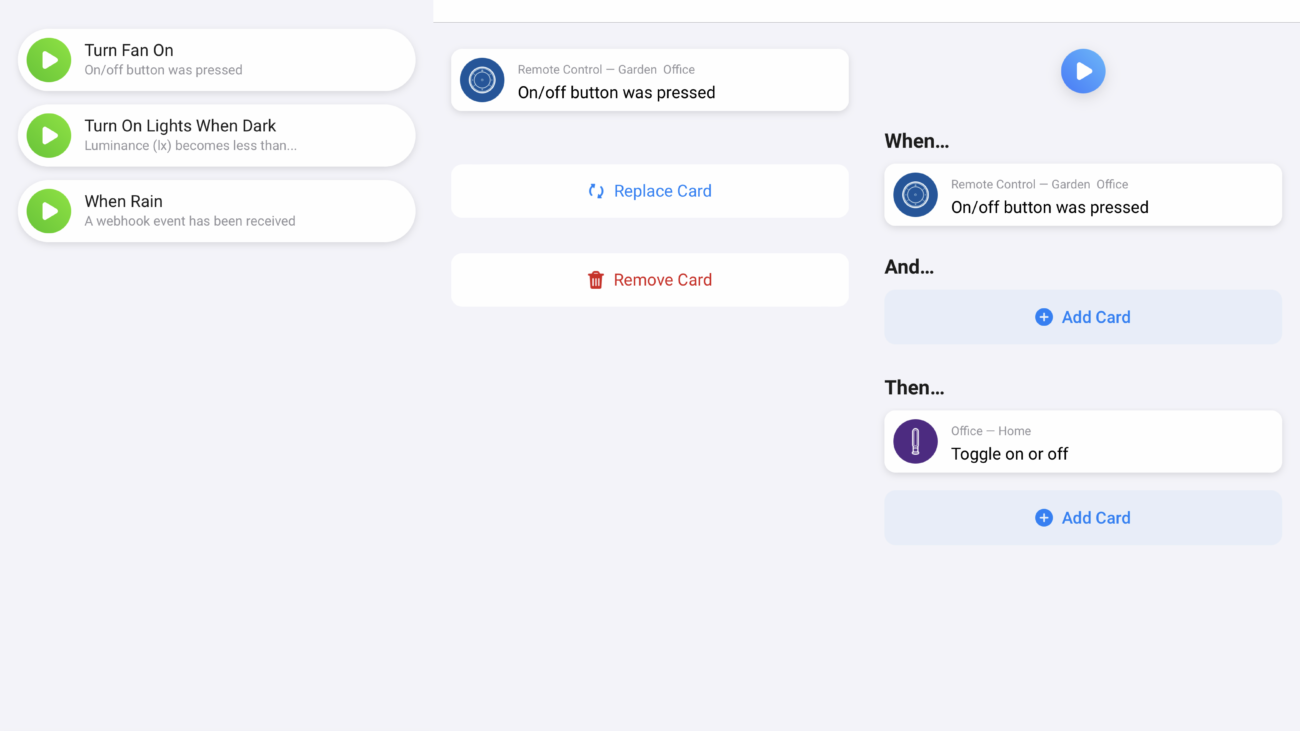
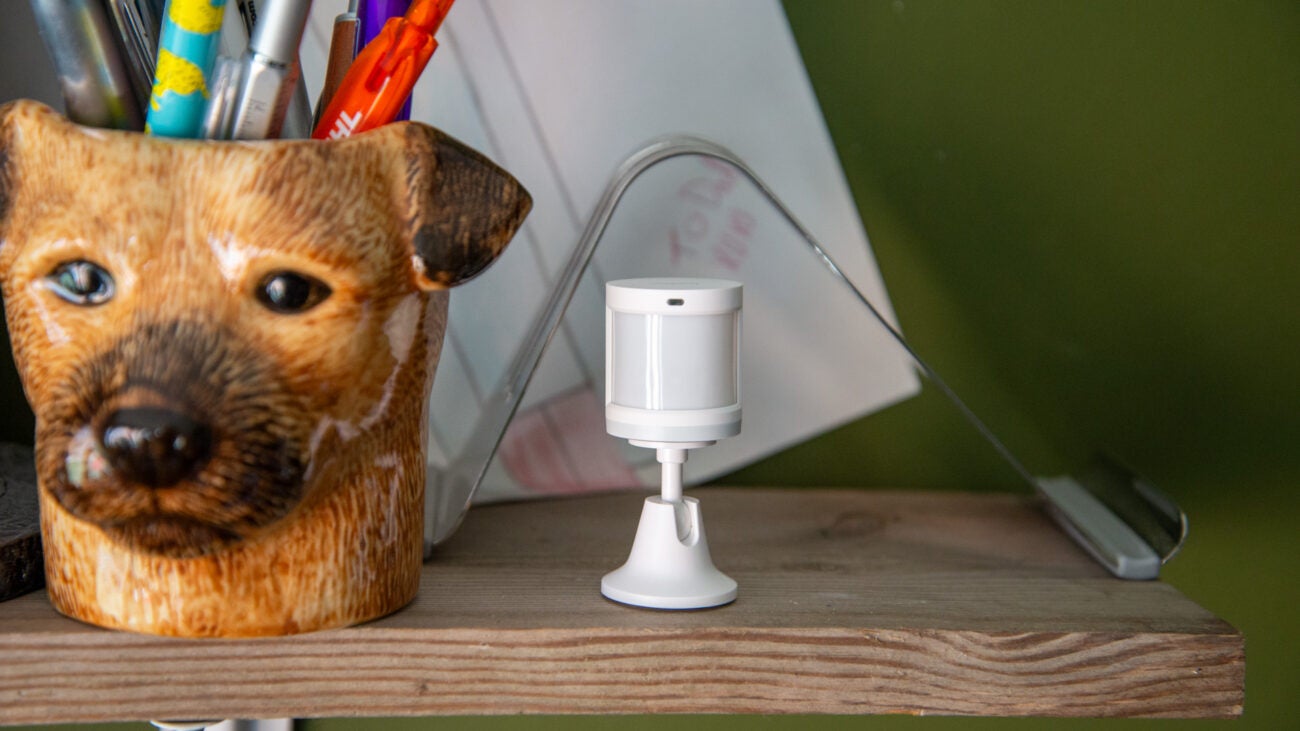
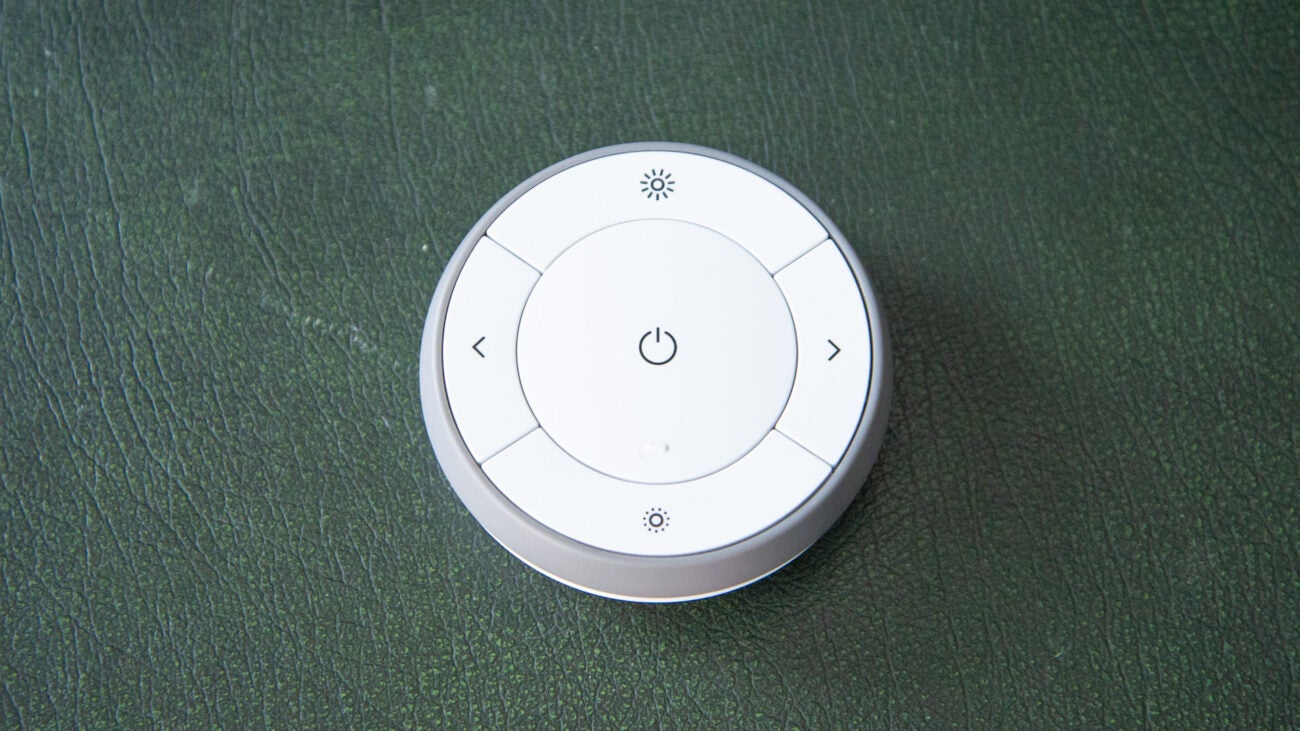
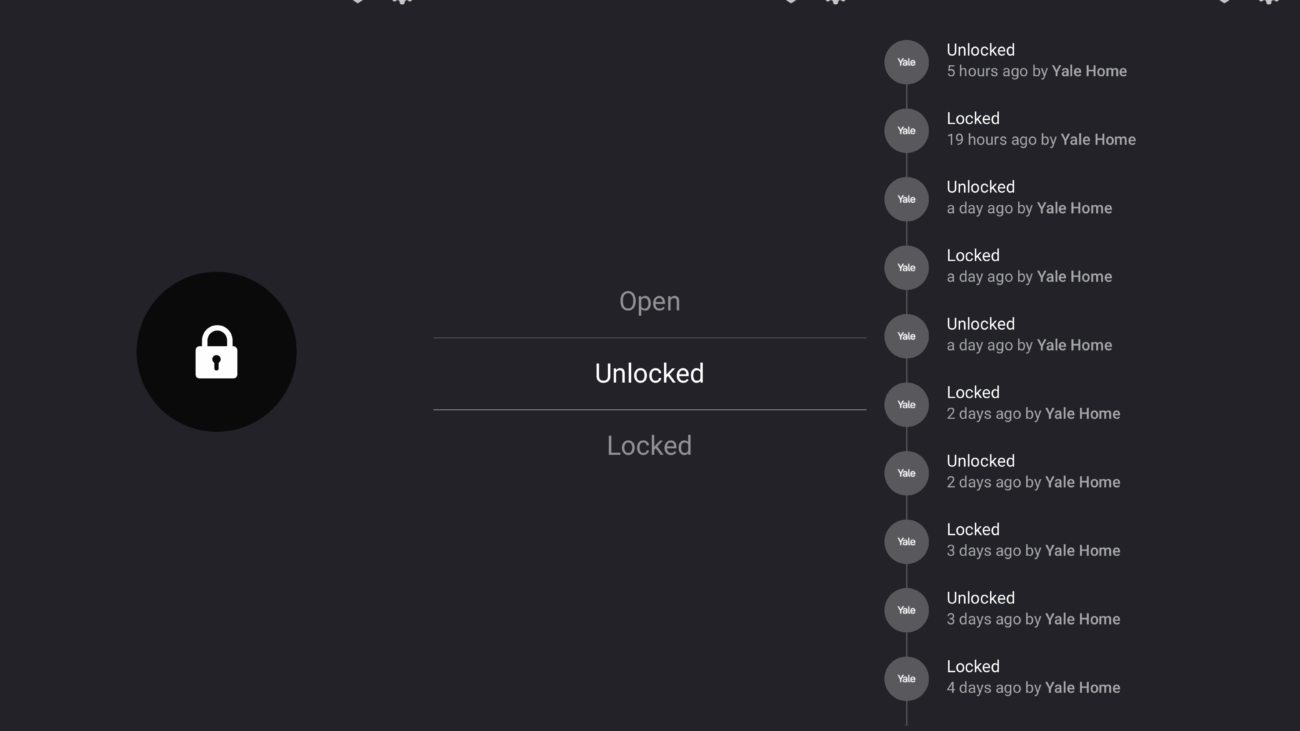

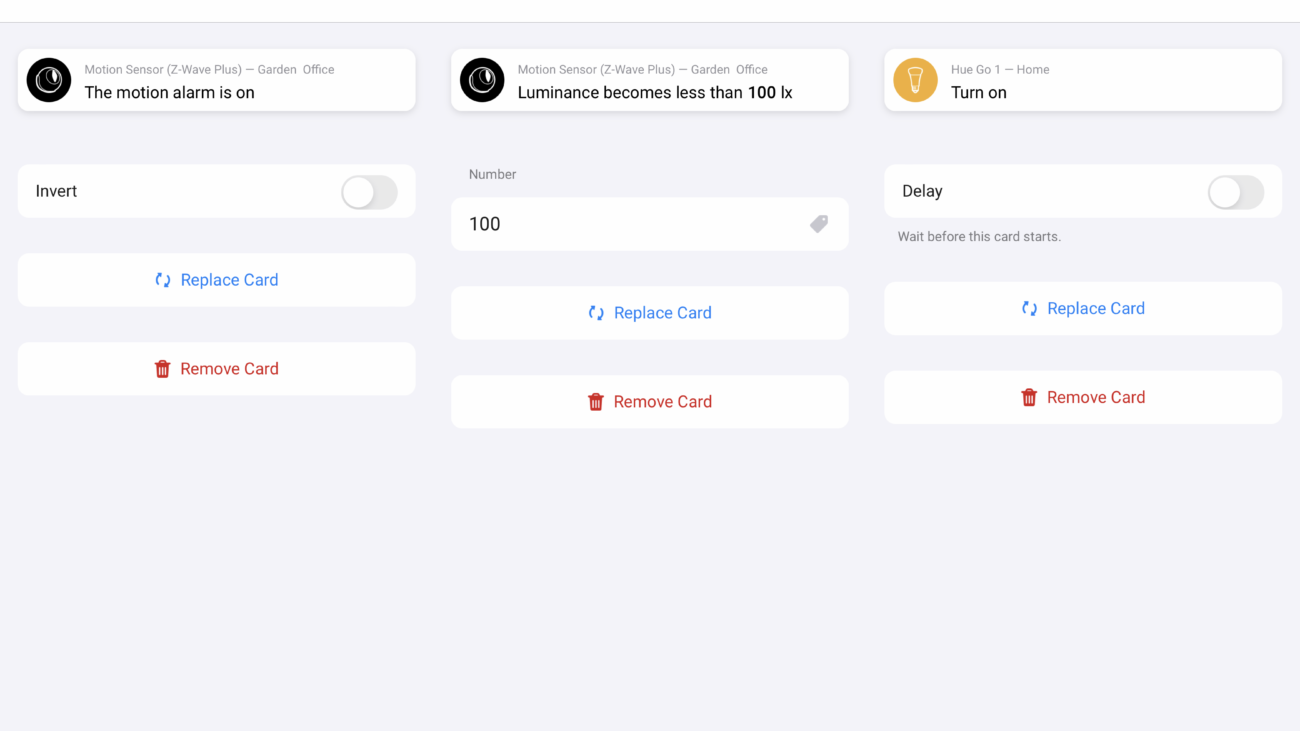
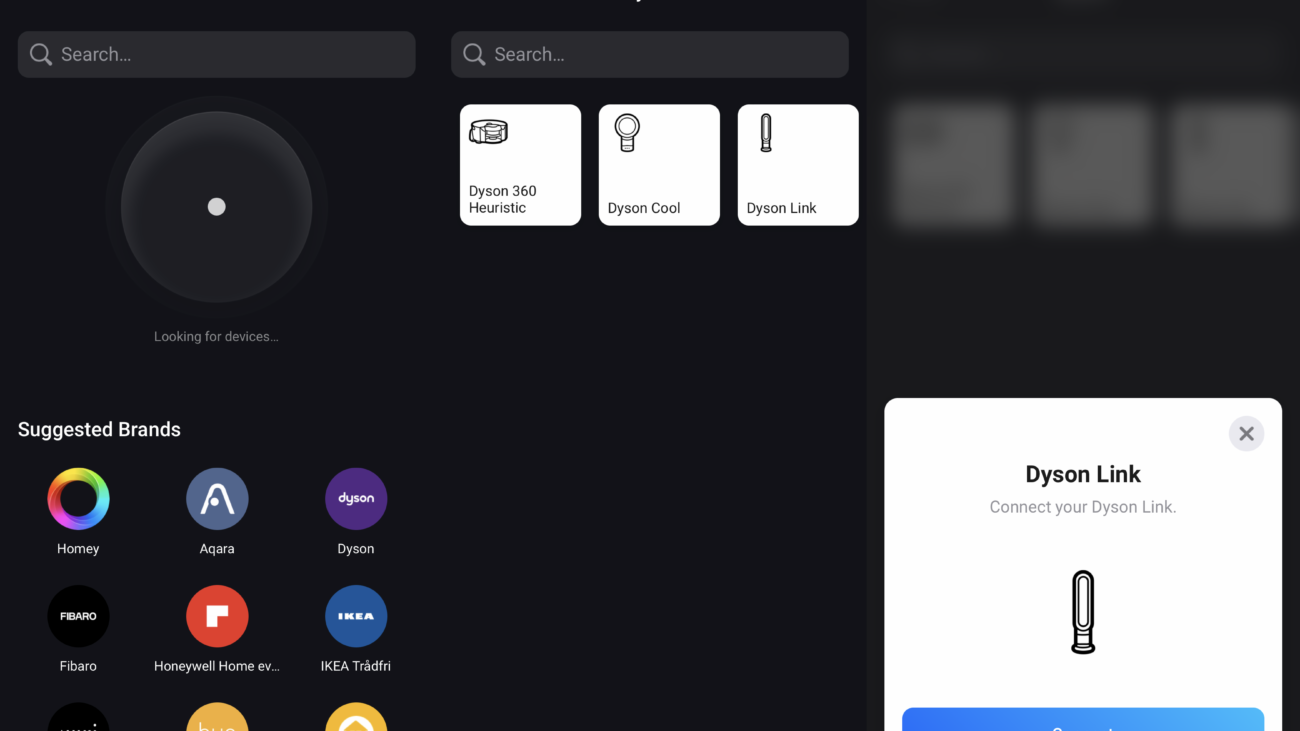
Verdict
At its best, the Homey Bridge provides a simple way to connect disparate devices under one roof, with support for Zigbee, Z-Wave, Bluetooth and cloud connections. The lack of Thread and Matter support is disappointing. Flows (or routines, as they’re more commonly called in other systems), can be exceptionally powerful, although most home users won’t need the more advanced options. Ultimately, SmartThings with a Hub provides similar features for free, HomeKit is easier to use, and Amazon Alexa and Google Assistant have better hardware support. All of these systems avoid monthly fees, too.
Pros
- Supports Zigbee, Z-Wave and Bluetooth
- Very powerful Flows
- Good device support
Cons
- No Matter or Thread support
- Supports fewer devices than Homey Pro
Key Features
- Wireless standardsSupports Cloud, Zigbee, Z-Wave, IR and Bluetooth devices.
Introduction
With the Matter smart home protocol starting to come to fruition, with its goal to unify the smart home, do we really need yet another smart home system and hub?
Homey certainly thinks so with the launch of its Homey Bridge, which gives direct connectivity to Bluetooth, Wi-Fi, Zigbee and Z-Wave devices, plus cloud control of multiple other devices. It’s a mix of the brilliant and the frustrating, and it’s a far techier and niche product than its rivals. Is it for you? Read on for my verdict.
Design and installation
- Colourful round box
- Simple to get it hooked up
The Homey Bridge works with the Homey app to bring support for Z-Wave, Zigbee, Bluetooth and Wi-Fi devices that directly connect to it. In many ways that’s similar to the SmartThings Hub (now made by Aeotec). It’s not a requirement to use the Homey Bridge, with plenty of devices supported via cloud connections, but adding one expands the range of devices that can be connected.
Technically, you can get started with Homey for free, but the fee-free version is limited to five connected devices or fewer. Realistically, you’ll need to pay the $2.99/£2.49 a month subscription fee to get Homey Premium, which then supports unlimited devices.
Paying may feel a bit strange, but there’s a lot of development and support behind the scenes. If you don’t want to use SmartThings, Google Home, Amazon Alexa or Apple HomeKit, then it seems only fair to chip in to support a rival service.
A round hub, the Homey Bridge, is powered by USB and connects to your home network via its Wi-Fi connection. There’s no Ethernet option for this device, which is a shame, as I generally find a wired connection more reliable, particularly for a device that I’ll rely on to control my smart home.
Installation takes just a few minutes, with the Homey app configuring your basic home layout, including setting floors and rooms (called zones here), and hooking up the Bridge.
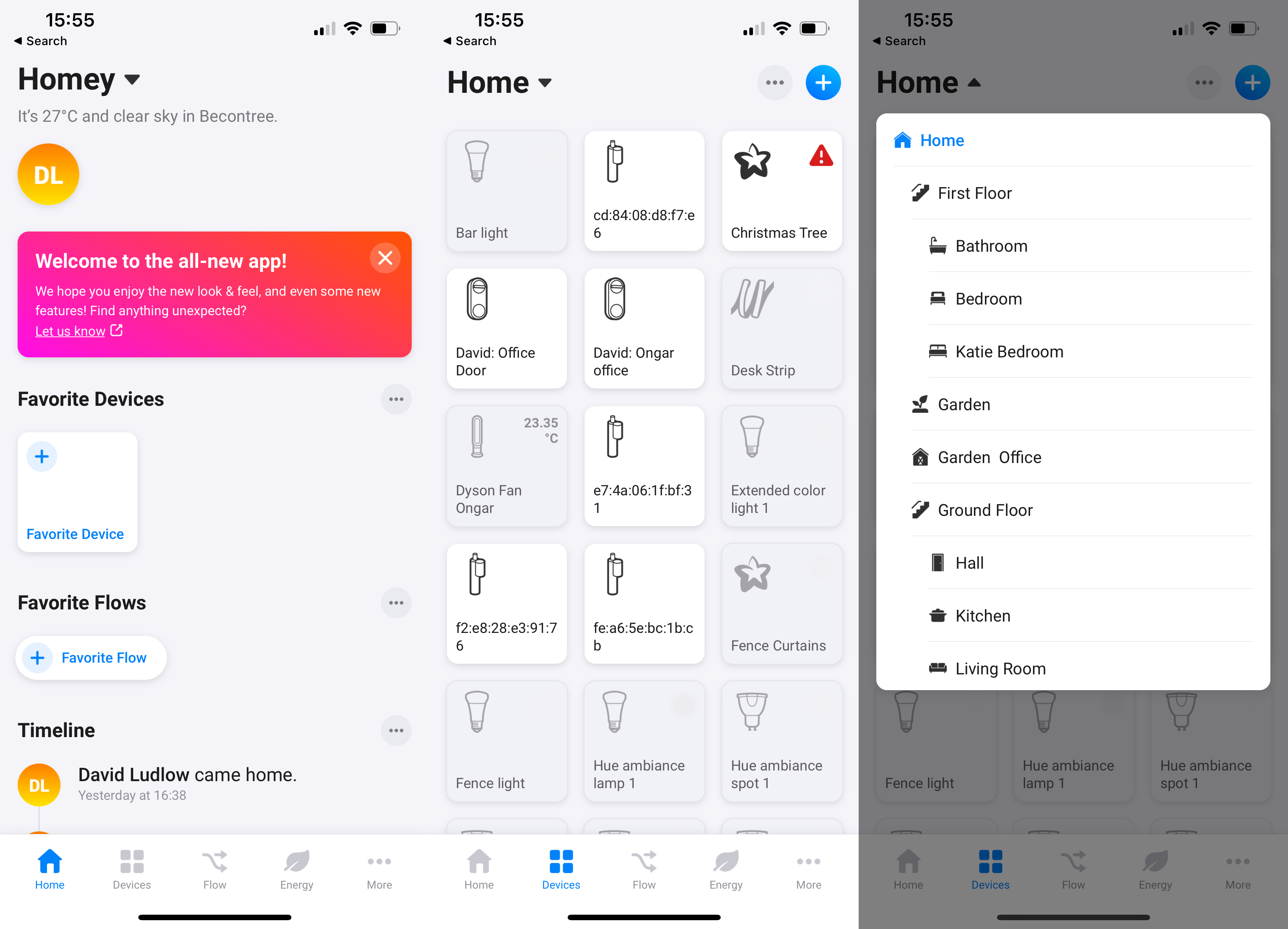
Before I dive into the rest of the review, it’s important to distinguish between the Homey Bridge and the Homey Pro, which is far more expensive. Both look very similar, but the Homey Pro supports a wider range of apps, so has better hardware support; the Homey Bridge supports most of the big names, and is a lot cheaper.
There’s currently no Thread support and no Matter support. That’s a big shame, as the other main players support Matter to one degree or another. Given that Matter is poised to be massive, supported by most new products, not having it here is a shame.
Device support
- Hardware support is hit and miss
- Fiddly to organise devices and zones
- Some devices don’t have full control
As with other smart home systems, the first thing to do is get started by adding devices. This is easy enough by hitting the ‘+’ button at the top of the screen, searching for the manufacturer of your smart devices and then following the on-screen instructions.
Depending on the type of device, installation takes one of two forms. For cloud connections, you’ll be redirected to the manufacturer’s website, prompted to log-in with your account details, which links your hardware.
For direct-connected devices, these need to be paired with the hub directly, following the instructions. For example, adding a Zigbee motion sensor, I had to press and hold the pair button.
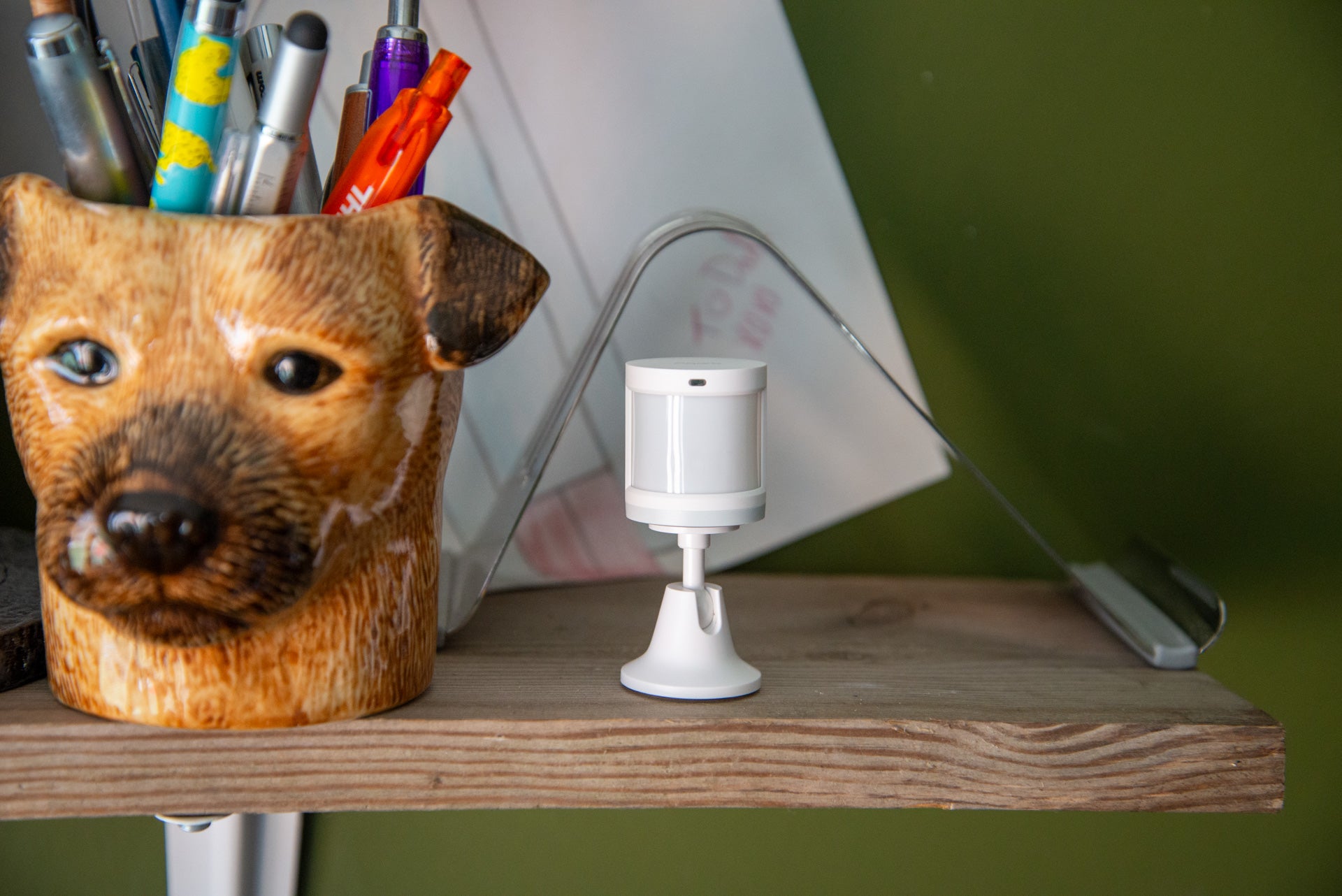
Supporting Z-Wave and Zigbee is great, as it massively extends the range of devices that you can add. And turning to smaller brands, such as Aqara, means that it’s possible to buy some relatively cheap sensors.
Hardware support is generally very good. I found that both of my smart door locks (an Ultion Nuki and Yale Linus) were available, as were my Somfy Motorised Blinds, Philips Hue lights, and Sonos players.
The Bridge also has an IR blaster in it, but it’s a little inflexible. Rather than being able to programme the hub to activate any device, only IR devices in Homey’s database can be added.
There were some other issues adding devices. I logged into my Dyson account, which brought in all of my fans, but Homey also decided that my Dyson 360 Heurist robot vacuum cleaner was also a fan. And, my Dyson Purifier Hot+Cool Formaldehyde didn’t display temperature selection controls, so I couldn’t adjust the heat output.
After reporting these issues to Homey, I uninstalled the Dyson connection, and reinstalled to find that there were now separate options for Heurist, Cool and Dyson Link. That let me add my robot separately, but when I tried to add all of my fans using the Dyson Link, my heater was no longer selectable. Currently, the heater isn’t supported, which is a shame.
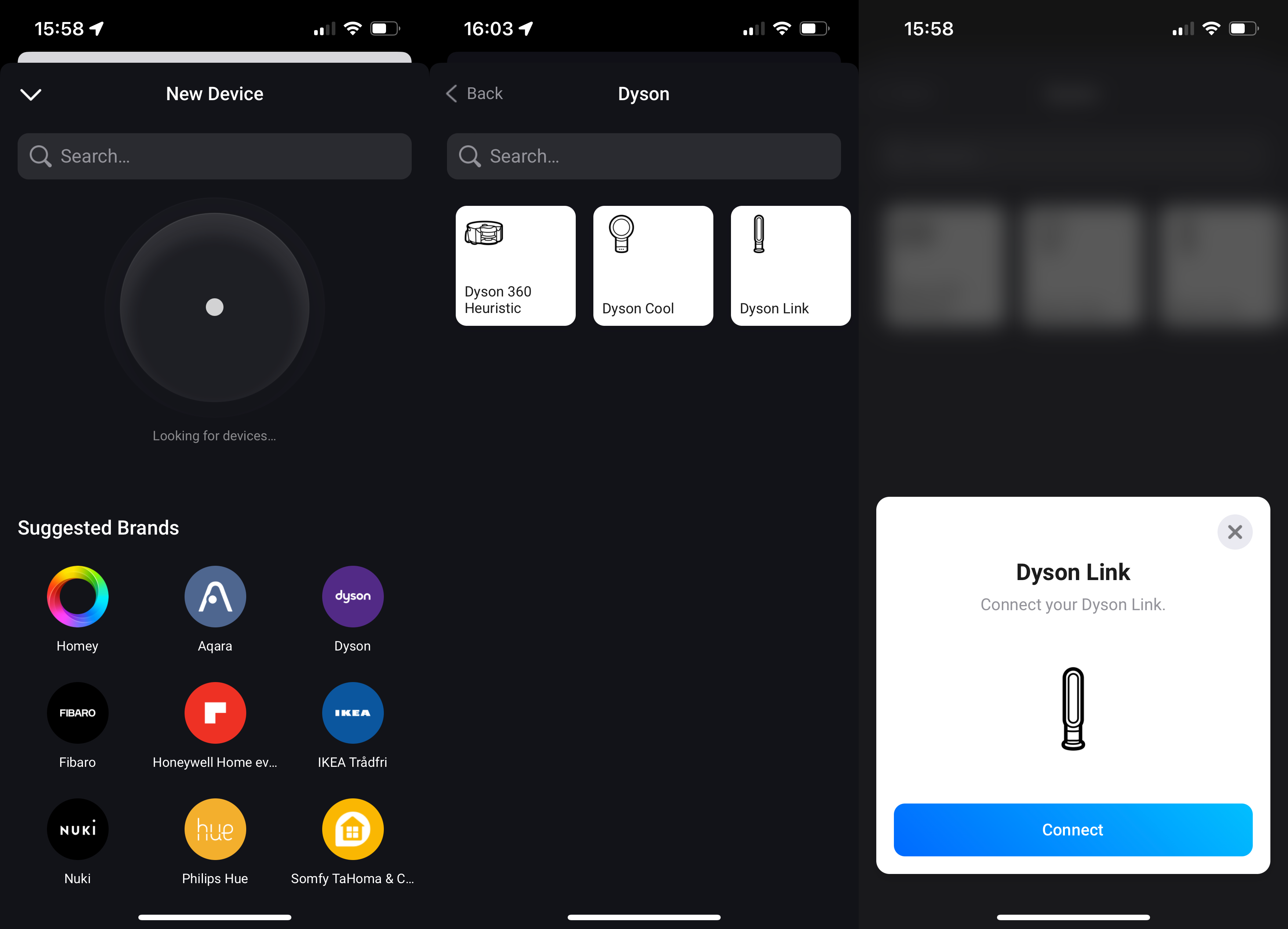
I tried to add my SwitchBot Blind Tilt automatic blind openers, but I just got an error when logging into my account; however, I could connect them directly via Bluetooth, which solved that problem.
It’s then a matter of whether or not a device is supported. For example, no Ring devices are on this system, but are in SmartThings and Alexa. Ultimately, every smart home system suffers from lack of support for one device or another, and Homey is no different. Before you dive in, I recommend downloading the app and seeing what is supported.
Be aware that there is a divide between the Homey Bridge and Homey Pro systems, with the latter supporting a wider range of devices, such as Govee lights. That’s a little frustrating and may mean that the Homey Bridge is not the right product for you.
The Homey app is organised by zones, which can be nested. For example, I have a First Floor zone, with two bedrooms and a bathroom nested underneath. In terms of organisation that’s great, but device organisation could be simpler.
New devices appear in the Zone currently selected, which is fine for a one-off, but annoying when there are multiple lights. My Philips Hue system consists of 31 individual lights. Having to select each one and move them into the right zone is time consuming and boring.
There’s no way to group lights into one handy control, as you can do with HomeKit, Alexa and SmartThings. The result is that the app can look very cluttered.
It’s also frustrating that some devices don’t appear. I’ve got wireless controls and a motion sensor in my Hue system, but they’re not exposed through the cloud connection that Homey uses, so I can’t reuse them here. If I use Alexa or HomeKit, I can use these existing sensors for routines. In some cases, I have to double-up on sensors that I already have.
Where devices are supported, most of the features that would be available in the manufacturer’s app are available in Homey, so I could control most of the devices using a single app.
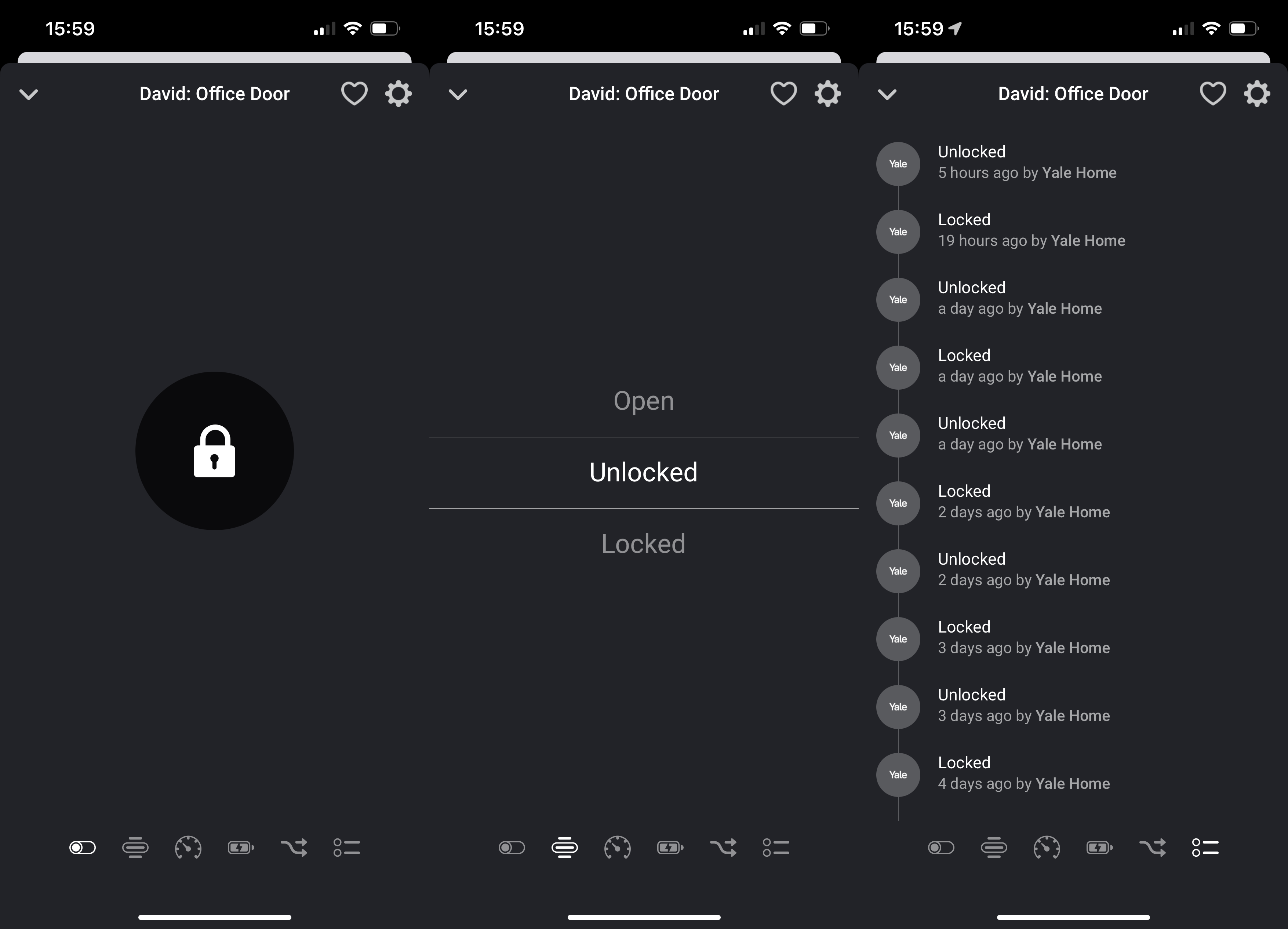
Features and Flows
- Very powerful Flows
- Amazon Alexa and Google Assistant support can cause issues
Homey can extend beyond its own app with support for Amazon Alexa and Google Assistant. This gives voice control over any device connected to Homey, which sounds great, but I did have to be careful enabling this.
Take my Hue lights, for example. I have these connected to Homey and to Alexa via the official Hue Skill. When I added the Alexa Homey Skill, all of my Hue lights were duplicated. It’s the same issue with the SmartThings Alexa Skill and one that’s really frustrating. Third-party systems such as Homey need to add an option to let users choose which devices they want to add to Alexa.
I could just add the Homey Skill and control my Hue lights through that, but the Hue Skill is more reliable and offers more features, so I don’t want to.
While having a single app for controlling devices is useful, Homey is at its most powerful when automating a smart home through Flows. Routines in any other system, Flows let me control my smart home automatically.
For example, I use my Nuki lock as a trigger, unlocking my Yale Linus lock and opening my Somfy blind. When I lock the door, I do the reverse and also turn off my Hue office lights.
More powerfully, Somfy Flows can have an ‘And’ exception: that is, a routine only runs if multiple objectives are reached. For example, using a Fibaro motion sensor, I can have my Hue lights turn on if the luminance level, measured by the sensor, drops below a certain level, and it’s between sunrise and sunset. That way, if my office gets dark during the day, I can turn the light on. Only SmartThings can rival Homey for such powerful routines.
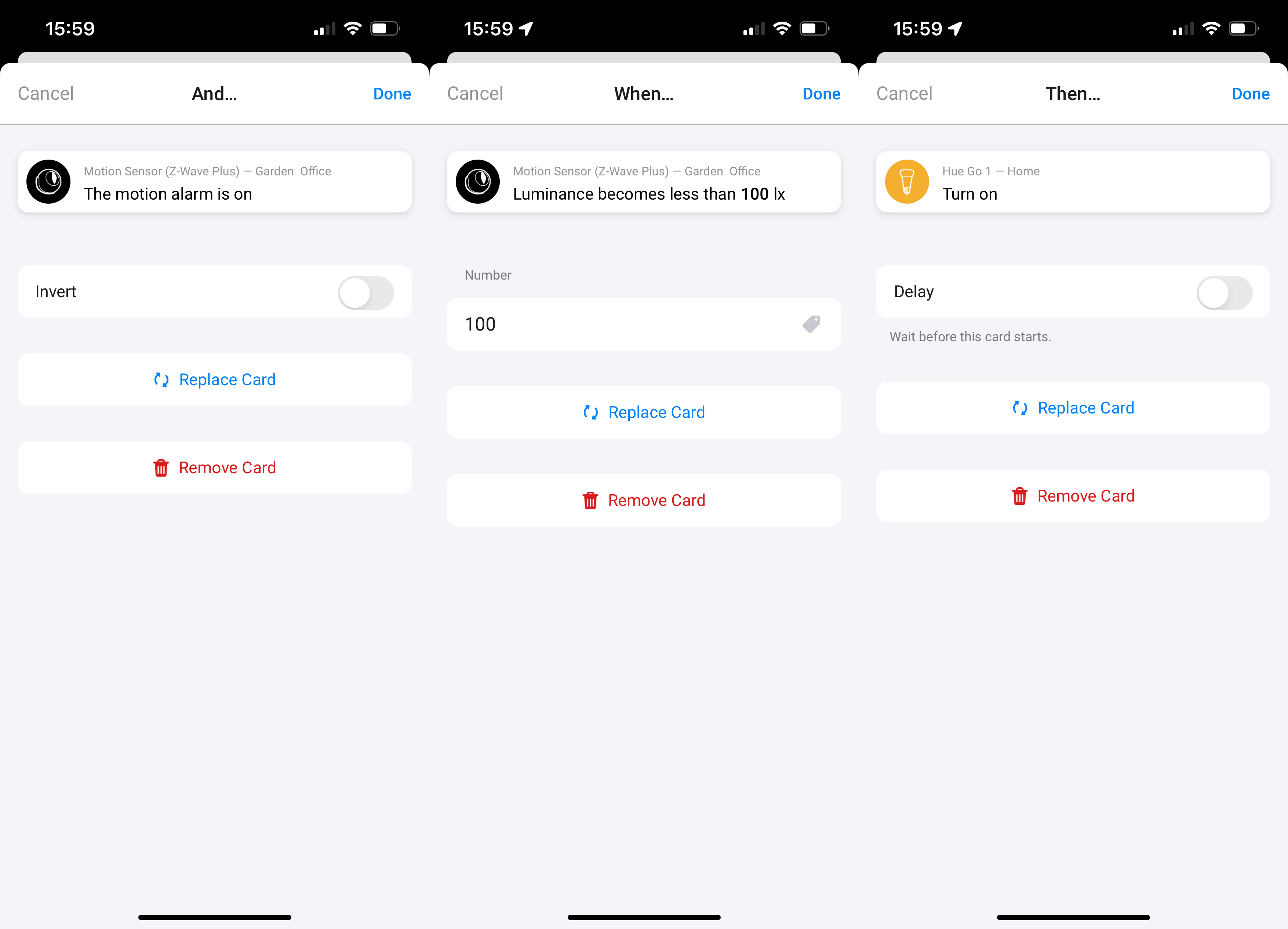
Flows don’t have a natural option to undo an action. With SmartThings, I can tell the system to turn on a light with motion but turn it off after a set number of minutes without motion. In many cases, Homey requires extra actions or additional Flows to do the same thing.
I love the way that there’s a toggle option in most Flows. With an Ikea Tradfri Remote, I could set the power button to turn a Dyson fan on and off. With HomeKit, it takes two routines and two actions to do the same thing. For example, I have a Flic button that turns on Adaptive Lighting in HomeKit when I hit the button once; to turn the lights off, I have a different routine that responds to a long press instead.
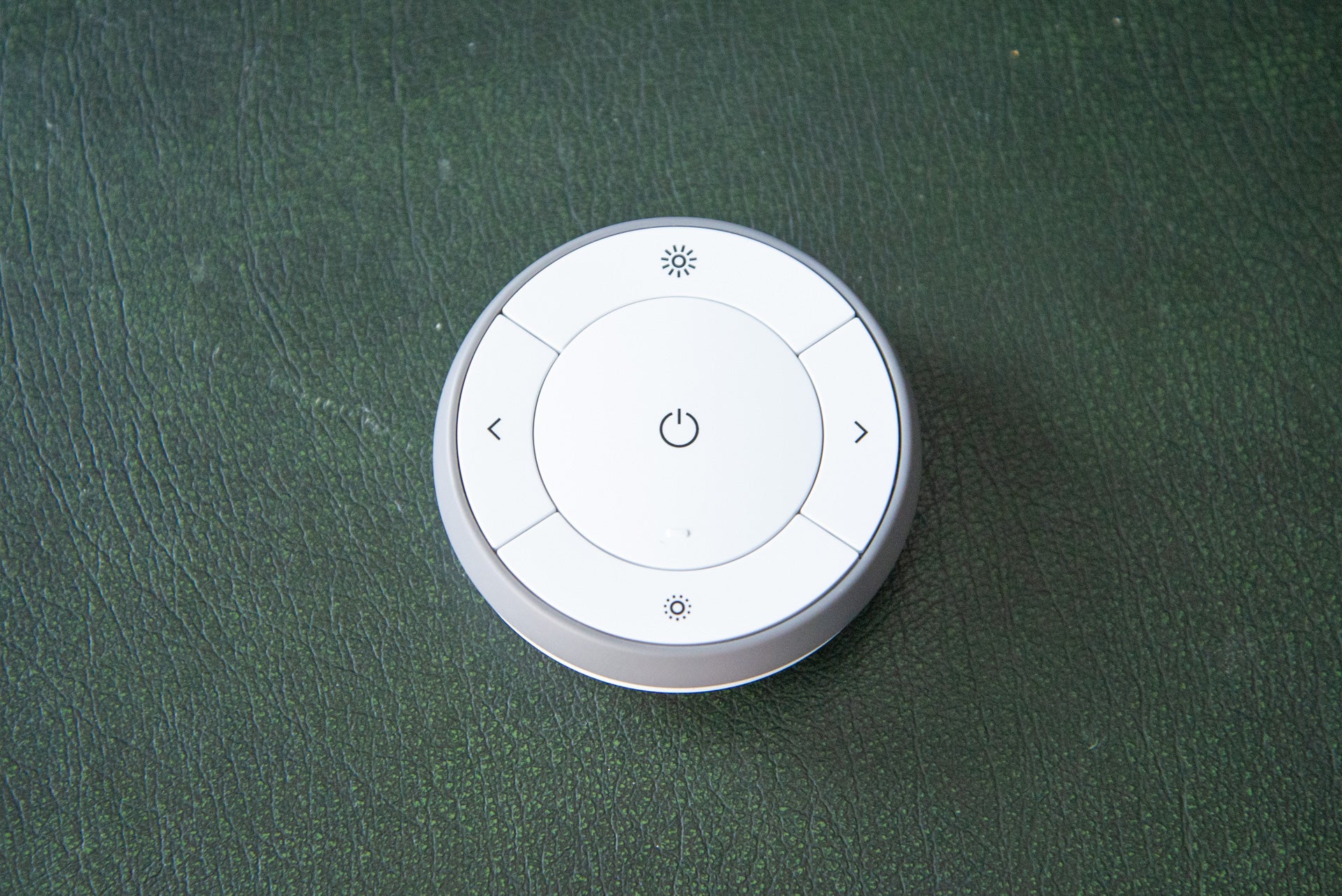
There are points when Homey is just annoying to use. There’s an option to turn on a Hue scene automatically, but the app just lists scene names, not the room they’re applied to. Given that each new Hue room gets a set of default scenes, all with the same name, trying to choose the right scene that activates in the right room is very hard.
Homey goes further than other smart home systems with Logic and Variables. Variables can be set in the app via a Flow or a Webhook request. They can be useful for debugging or even for triggering a Flow when one changes.
As well as user-created variables, Logic can also take readings from devices. For example, the volume of a Sonos player or the temperature read by a Dyson fan. Most people won’t need to touch this part of the system, but anyone looking to do anything particularly complicated will find that Homey matches their ambition.
Latest deals
Should you buy it?
You need more complicated smart home actions: Homey’s Flows are very powerful, and ideal for those that like to tinker with their smart home.
You want wider product support and no fees: There’s better support in systems such as Amazon Alexa and Google Home, while the other main systems are free to use.
Final Thoughts
At its best, Homey is a super powerful home automation system, with Zigbee and Z-Wave support extending the range of devices that are supported. Hardware support is fairly limited. While Homey Pro supports more devices, it’s expensive and still falls behind Amazon Alexa and Google Assistant.
Then, there are some frustrating parts of the app, such as the inability to group lights together, which HomeKit does so well. Homey does offer some very powerful automations, although your average user won’t need these or, indeed, want to pay monthly for them. If you want Zigbee and Z-Wave support, get a SmartThings Hub, and use Amazon Alexa, HomeKit or Google Home for automations, as these systems are free.
How we test
We test every smart home product we review thoroughly over an extended period of time. We use industry standard tests to compare features properly. We’ll always tell you what we find. We never, ever, accept money to review a product.
Find out more about how we test in our ethics policy.
We test how each product integrates with other smart home systems including Amazon Alexa, Google Assistant, Apple HomeKit, IFTTT and Samsung SmartThings
We use each smart home product in a real world setting, integrating it into our home.
FAQs
With the free package you get five devices; it’s unlimited devices with Homey Premium, although there are some limits on the number of devices by protocol: 240 Z-Wave, 50 Zigbee and unlimited Bluetooth.
The simple answer is product support. With Homey Bridge, you can only add certified products; the Homey Pro supports third-party add-ons for a wider range of devices. Homey Pro is also more expensive.

